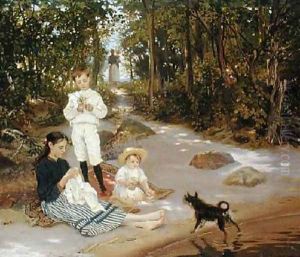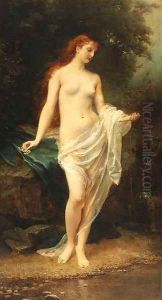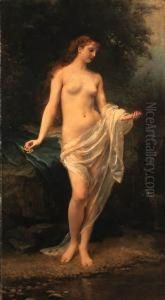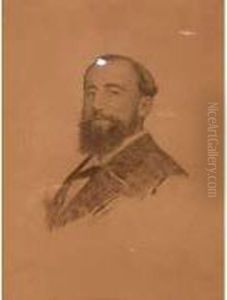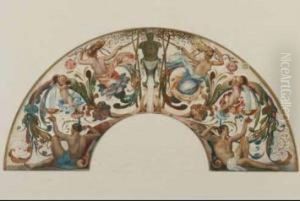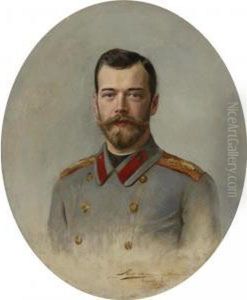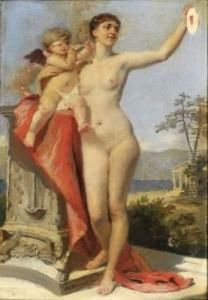Ernst Friedrich von Liphardt Paintings
Ernst Friedrich von Liphardt was a Russian painter of German descent, born in the year 1847 in the Russian Empire. His life and artistic journey reflect the complex cultural and historical ties between Russia and Germany during the 19th and early 20th centuries. Liphardt was part of the broader movement of academic art prevalent in Europe at the time, which emphasized classical standards and techniques, while also being open to the influences of Romanticism and Realism that were sweeping the artistic communities.
Von Liphardt's training and career were deeply embedded in the academic traditions of the era. He studied at the Imperial Academy of Arts in Saint Petersburg, which was a major center for the arts in Russia, attracting students from across the empire and beyond. The academy was known for its rigorous training in classical art, drawing from the Renaissance and Baroque periods, and it played a pivotal role in shaping Liphardt's approach to painting. His works often depicted historical scenes, landscapes, and portraits, characterized by meticulous attention to detail, a hallmark of academic painting.
Throughout his career, Liphardt contributed to the cultural and artistic exchanges between Russia and Germany. He participated in numerous exhibitions and was recognized by both Russian and German art institutions. His paintings are notable for their technical precision and often convey a sense of nostalgia and reverence for the past, aligning with the broader Romantic tendencies of the time.
Despite the challenges posed by the political and social upheavals of the late 19th and early 20th centuries, including the Russian Revolution and the subsequent establishment of the Soviet Union, von Liphardt continued to work and maintain his artistic vision. His dedication to the academic style, even as modernist movements began to dominate the art world, reflects a commitment to the values and techniques he learned during his formative years.
Ernst Friedrich von Liphardt passed away in 1932, leaving behind a legacy that captures a unique period in Russian and German art history. His works, while perhaps not as widely recognized today as those of some of his contemporaries, offer valuable insights into the academic art traditions of his time and the cultural dialogues between Russia and Germany. Through his paintings, von Liphardt contributed to the rich tapestry of European art history, bridging cultures and epochs with his brush.
